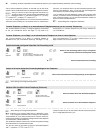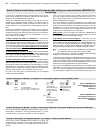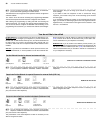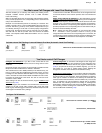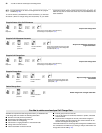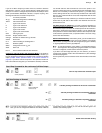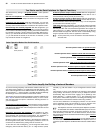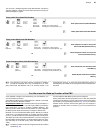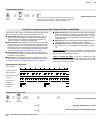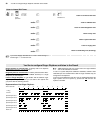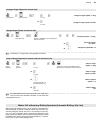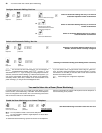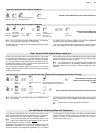
34 You like to use the Serial Interface for Special Functions
The default factory setting is „no special function
“. Other operation
modes are:
Dial with a PC telephone:
An internal subscriber can use a PC dialler
on a connected PC. This PC telephone needs to be configured in COM-
set.
Continuous call data output:
With this configuration, you can print
your call data unconditional after the call to an attached printer. The
start/stop command described later is needed for this operation mode.
Data exchange with external programs:
With this configuration, you
can transfer data to your own type of application program (this software
is not included in the PBX package). Sending of the stored call data can
be activated by sending a certain character to the PBX. With the char-
acter „$“ you will activate the transfer of the first line. With the character
„%“ you will activate the transfer of the next line. A character „%“ will
only activate the transfer of a single line.
D-channel protocol output in binary format:
With this configuration,
the PBX will continuously send the D-channel protocol data of one or
several channels in binary format (for service only).
D-channel protocol output in ASCII format:
With this configuration,
the PBX will continuously send the D-channel protocol data of one or
several channels in ASCII format (for service only). You can analyse the
protocol data with a terminal program.
TAPI mode:
With this configuration, you can use the TAPI functionality
(TAPI=Telephony Application Programming Interface) of the PBX. You
can use your PBX with various Windows applications that support the
TAPI interface (e.g. a dialler). Applications in Windows 95, 98, Me and
Windows 2000 are supported. The TAPI driver is automatically config-
uring this operation mode, when an application is launched.
PC and printer may not be connected to the serial interface at
the same time.
To prevent entering frequently used external numbers each time, you
can assign these numbers to a 4-digit Short-Code Dial Number. This
Short-Code Dial Number will be dialled instead of the Exchange Line
Access Number
0 + external number. The PBX will dial automatically
the Exchange Line Access Number and the stored number.
The number can be stored with the bundled PC software COMtools (see
also p. 60) into the Short-Code Dial Number memory. If no PC is avail-
able, the PBX offers the option to execute the following functions on
your own telephone.
Private Short-Code Dial Numbers:
These numbers are only available
to the telephone used for programming. So you have to program the pri-
vate Short-Code Dial Number with the telephone that will later be used
to access the numbers.
Emergency Short-Code Dial Numbers:
Enter Numbers as emer-
gency Short-Code Dial Number that should be available for dialling to
each subscriber with exchange line authorization. The permission to
dial these numbers is part of each exchange line authorization.
Mandatory entries for the numbers are e.g. the emergency numbers of
the fire brigade and the police. The emergency numbers 110 and 112
are stored in the default factory setting under 8110 and 8112.
To save time in a case of emergency, you can assign the entries in the
emergency Short-Code Dial memory to 2 or 3 digit numbers (10-59;
100-599), e.g. with the number 110 (via configuration software COM-
set).
The numbers 110 and 112 are assigned to 8110 and 8112 in the default
factory settings. That means, if you dial 110 on you telephone, the PBX
automatically dials the Short-Code number 8110 (Exchange Line
Access Number
0 + external number 110). The advantage is that
even persons without PBX experience or knowledge of Exchange Line
Access Numbers can dial these numbers without any problems.
You can store a maximum of 10 emergency numbers. You can choose
from a numbering range of 8110 to 8199. If you try to program more
than 10 digits with your telephone, you will hear the busy tone.
The telephone book of a connected system telephone (COMfor-
tel 1500/2500 and COMfort 1000/1200/2000 plus) will be com-
bined with the telephone numbers (with name) entered in the short-
code dial memory of the PBX. To use these functions, the short-code
dial numbers with names should be entered with the program COMtools
Telephone Book.
With the program COMtools Telephone Book
you can transfer some of
the short-code dial numbers of the PBX into the telephone book of a
connected system telephone COMfortel DECT 900 and COMfort DECT
800.
You like to use the Serial Interface for Special Functions
☞
Select Operation Mode of the Serial Interface
b7O 86 0 #
Activate operation mode „No special function“
secret password
or
1
Activate operation mode „Selection via PC with ATD command“
or
2
Activate operation mode „Continuous call data output“
or
3
Activate operation mode „Data exchange with external programs“
or
4
Activate operation mode „D-channel protocol output in ASCII format“
or
5
Activate operation mode „D-channel protocol output in binary format“
or
6
Activate operation mode „TAPI mode“
You like to simplify the Dialling of external Numbers
☞



